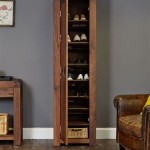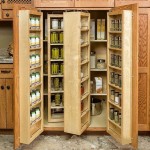Kitchen Cabinets Up to the Ceiling
Incorporating kitchen cabinets that extend all the way to the ceiling is a design trend that has gained significant popularity in recent years. This design choice offers several advantages, including increased storage space, a more streamlined appearance, and the potential to create a more cohesive and elegant aesthetic in your kitchen.
One of the primary benefits of ceiling-height cabinets is the substantial increase in storage capacity they provide. By extending the cabinetry vertically, you maximize the available storage space, allowing you to accommodate more kitchen items, appliances, and pantry goods. This can be particularly beneficial in smaller kitchens where storage space is limited.
In addition to increased storage, ceiling-height cabinets contribute to a more streamlined and cohesive look in the kitchen. The uninterrupted vertical lines created by the cabinets help to draw the eye upward, giving the illusion of a taller and more spacious room. This effect is especially pronounced in kitchens with high ceilings, where the vertical cabinets can visually balance the proportions of the space.
Furthermore, ceiling-height cabinets provide an opportunity to create a more sophisticated and elegant ambiance in the kitchen. By incorporating decorative elements such as crown molding, glass panels, or intricate hardware, you can transform your cabinets into a focal point that enhances the overall aesthetic of the room. This approach is particularly effective in traditional or classic-style kitchens, where the tall cabinets can exude a sense of grandeur and timeless elegance.
However, it is important to consider both the advantages and limitations of ceiling-height cabinets before making a decision. While they offer increased storage and aesthetic benefits, they may not be suitable for all kitchens or design preferences.
One potential drawback of ceiling-height cabinets is their cost. They typically require more materials and labor to install compared to standard-height cabinets, which can increase the overall cost of the project. Additionally, accessing items stored in the upper cabinets may require a step stool or ladder, which can be inconvenient for some individuals.
Another consideration is the impact on natural light. If the ceiling-height cabinets block a significant amount of natural light from windows, it can make the kitchen feel darker and less inviting. To mitigate this issue, consider incorporating glass-front panels or open shelving into the design to allow light to penetrate and brighten the space.
Ultimately, the decision of whether or not to install ceiling-height kitchen cabinets depends on your individual needs, preferences, and the specific design of your kitchen. By carefully weighing the advantages and limitations, you can determine if this design choice is the right fit for your home.

Pros And Cons Of Kitchen Cabinets To The Ceiling Bwc

How To Use Floor Ceiling Kitchen Cabinets Their Full Potential

How To Extend Kitchen Cabinets The Ceiling

Should Kitchen Cabinets Go All The Way Up To Ceiling Bathroom Remodelers Custom And Semi

How To Extend Kitchen Cabinets The Ceiling

Budget Diy Extend Kitchen Cabinets To The Ceiling Pennies For A Fortune

How To Raise Your Kitchen Cabinets The Ceiling Wildfire Interiors

The Pros And Cons Of Taking Kitchen Cabinetry To Ceiling

How To Maximize Space With Kitchen Cabinets The Ceiling Shoe Makes New

Idea File Floor To Ceiling Cabinets Capitol Granite








